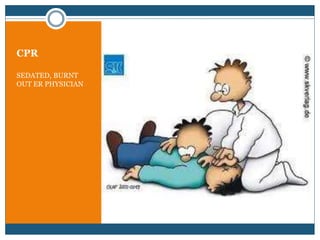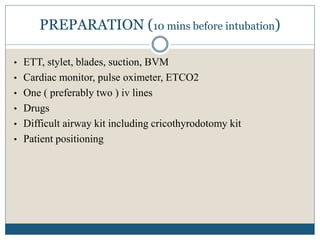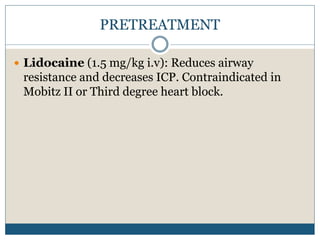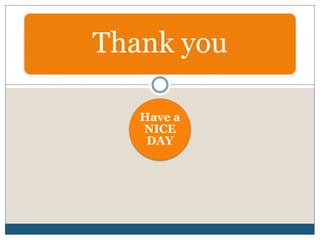This document provides information on rapid sequence intubation (RSI) in adults. It defines RSI as the simultaneous administration of a sedative and neuromuscular blocking agent to facilitate endotracheal intubation while minimizing aspiration risk. The principles of RSI are described, including preparation, preoxygenation, pretreatment, paralysis with induction, protection/positioning, tube placement confirmation, and post-intubation management. Contraindications and advantages of RSI are outlined. Specific induction agents, paralytics, and reversal drugs are also discussed.


































